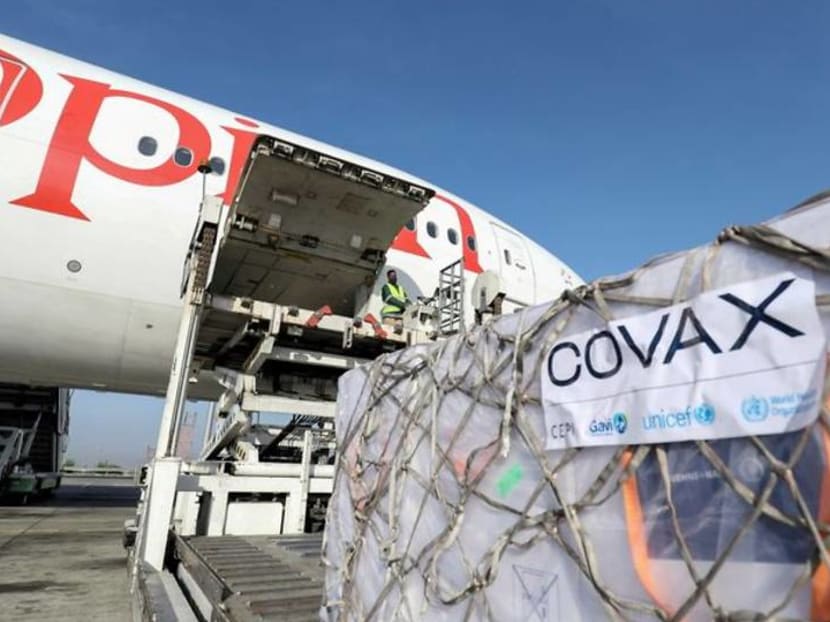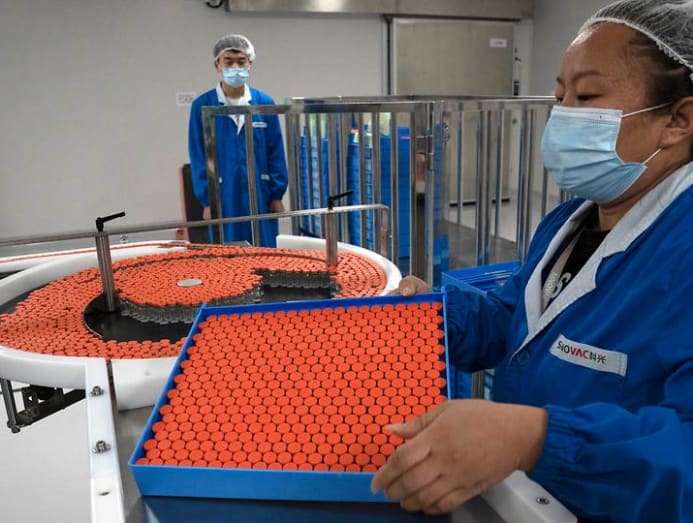Commentary: Why hasn’t COVAX, the global COVID-19 vaccine programme, worked out as promised?
The idea to create a common facility was rooted in the idea that to beat COVID-19, everyone needed access to vaccines and not just those who could afford them. Yet, nearly two years in, there are still wide gaps, says Yale-NUS professor John Driffill.

Airlines staff unload AstraZeneca/Oxford vaccines under the COVAX scheme from a cargo plane at Bole International Airport. (File photo: REUTERS/Tiksa Negeri)
SINGAPORE: The richer countries of the world have made much faster progress towards vaccinating their populations against COVID-19.
The scale of the disparity between high- and low-income countries is striking.
While more than 4 billion doses have been administered globally, they are concentrated in high-income countries and some emerging economies: As at end August, over 2.4 billion in China alone, 371 million in the United States, and large numbers in Japan and the major European countries.
Twenty-eight countries, the leaders in this race, have fully vaccinated more than 60 per cent of their populations. Meanwhile, 49 countries have administered fewer than 10 doses per 100 members of the population.
The only countries in Africa to have administered more than 28 doses per 100 population are Morocco and Tunisia. In most of Africa, 1.5 per cent of the population or fewer are vaccinated.
It was not meant to be this way. Halfway through 2020, the COVAX initiative was launched, led by the Global Alliance for Vaccines and Immunization (GAVI), the Coalition for Epidemic Preparedness Innovations (CEPI), the World Health Organization (WHO) and UNICEF, with the aim of pooling resources for the development and purchase of vaccines globally.
Under the COVAX scheme, high-income countries would commit to paying for vaccines for themselves and make donations to cover the costs of providing vaccines to 92 low-income countries.
All participants were to then have received enough vaccines for at least 20 per cent of their populations.
To attract enough high-income countries into the scheme, they were allowed to order enough vaccines for up to 50 per cent of their population.
Currently, 139 countries participate in COVAX, comprising 92 low and middle-income countries and 47 high-income donor countries and self-funded countries.

FALLING SHORT OF PROMISES
It has long been recognised that the COVID-19 pandemic requires a global response. There is little point in countries individually protecting themselves from the disease while it circulates in other countries, allowing new variants to evolve.
Poorer countries need external support to obtain vaccines quickly and deliver them to their populations.
Of course, to vaccinate people, countries need more than a supply of vaccines.
They need the ability to distribute supplies within the country and to keep vaccines at appropriate low temperatures, as well as adequate healthcare infrastructure – medical staff, clinics and so on – to administer vaccines to their populations. Something as basic as a decent road system is essential to distributing vaccines around the country.
Notwithstanding these challenges, actual deliveries from COVAX so far have fallen a long way short of the initial target. COVAX had the aim of delivering 2 billion doses in 2021 and 1.8 billion doses to 92 poorer countries by early 2022.
By Aug 16, it had shipped only 203 million doses, which makes the target look well beyond reach.
BUYING DIRECT, BYPASSING COVAX
COVAX has been hindered by the actions of major economies who bought up large supplies of vaccines directly from the manufacturers, bypassing COVAX.
Many major economies indulged in an unprincipled scramble to buy up vaccines. The United States has bought, and has agreements and options, to buy 3.5 billion doses.
After a slow start to obtain vaccines, and tussles with the United Kingdom and AstraZeneca over supplies, the European Union has, by now, obtained access to 4.3 billion doses; the UK 629 million doses. These are enough to give every member of their populations eight to 10 doses.
In the early days, over-ordering doses of a variety of different products was driven by uncertainty about the effectiveness of the vaccines.
It might be argued that the initial commitments made by the UK, the United Sates, the EU, and others accelerated the development of effective vaccines and produced spill-over benefits for the world as a whole, in the form of a greater variety of vaccines, quicker development, and manufacturing in greater quantities.
But with data on how well the vaccines work, continued accumulation of orders looks harder to rationalise or justify. While some developed countries have made a show of donating some of their surplus vaccines to low-income countries, the amounts have been relatively small and donors have been left with substantial surpluses of supplies.
While much of the world remains unvaccinated, some countries, like Israel, have progressed so far through their vaccination schedule that they are now offering booster shots.
Germany, France, the UK and the US are also planning to provide booster shots, though experts argue that more lives would be saved by giving first shots to the unvaccinated in poor countries.
While vaccines lose their potency over time, the size of this fall-off and the effectiveness of boosters are still uncertain. The benefits of a first dose are, with little doubt, much greater.
SUPPLY AND FUNDING ISSUES
Deepening the supply shortage, India, one of the world’s biggest vaccine manufacturers, cut off exports in March this year, in the face of the devastating wave of COVID-19. The country was woefully unprepared for the scale of the crisis.
The Indian government initially ordered far too few doses. Even now, only 8.8 per cent of its population are fully vaccinated. Nevertheless, India seems likely to resume exports later in the year, boosting the supply available to COVAX.
The capacity of manufacturers to deliver vaccines this year has been limited. UNICEF puts global production capacity, up to the end of 2021, at 13.9 billion doses.
Encouragingly, it looks as if it will grow to 42.4 billion in 2022 and 43 billion in 2023. The growth of supply raises the prospect of much higher vaccination rates across the globe in the next two years.
COVAX was held back not only by inadequate supplies of vaccines, but also by lack of funding. Some donor countries provided their promised donations later than promised.
However, at a meeting in Japan on Jun 2, an additional US$2.4 billion was raised, increasing COVAX’s resources to US$9.6 billion.
With this, COVAX hopes to be able to deliver 1.8 billion doses to the 92 low-income countries in 2021 and 2022 and raise their vaccination rate to 30 per cent of the population.
This is a sizeable advance from where we are today, but still a long way short of the fraction needed to keep the pandemic under control.
Experts discuss variants on the loose, their effect on vaccines and why this pandemic will be a chronic problem for a while:
COVAX has been criticised for using too simplistic a model in aiming at an equal vaccination rate across countries. This target ignores the differences in countries’ abilities to deliver doses to the population, the stage of the pandemic countries were at, the pressure on their healthcare system, and their ability to roll out a mass vaccination campaign.
Targets differentiated by country may have produced a distribution of vaccines better able to dampen down the pandemic.
This episode has thus far reflected a failure of global solidarity. COVAX was pushed aside in the early race to acquire vaccines. The major economies paid lip-service to the idea that the pandemic needed a global response, that vaccines should be distributed around the world equitably.
But when push came to shove, the pressure to vaccinate their own populations first overwhelmed any communal feelings. Nearly two years in, the situation may be improving.
As high-income-country vaccination rates rise, global production capacity increases, and funding support for low-income countries’ vaccination efforts rises, COVAX may play a more prominent role.
John Driffill is Visiting Professor of Social Sciences (Economics) at Yale-NUS College.











